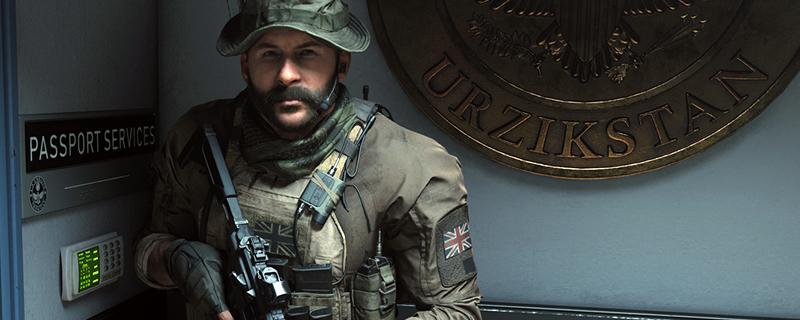Call of Duty: Modern Warfare RTX/Raytracing PC Analysis
Conclusion – Is DXR worth it in Call of Duty?  Â
With the PlayStation 5 and Xbox Scarlett on the horizon, we know that the term “next-gen” is going to see a lot of usage over the coming months, especially with regards to raytracing.Â
With Modern Warfare, Infinity Ward and Beenox have worked hard to bring raytracing to their game in a way that performance friendly. This isn’t an all-encompassing raytracing implementation like we’ve seen in Control or Metro Exodus. With this in mind, we can see why some will be disappointed in how Nvidia’s RTX feature set is utilised here. Even so, the graphical boost that DXR raytracing offers here is nothing to be scoffed at.Â
From the first image comparison of this analysis, we can see that DXR shadows is something that’s hard to move back from. For effect, we have added this comparison slider again below, to show once more how shadow maps can fail spectacularly. When looking at the weeds at the center of the image, it is clear that DXR raytracing has the ability to take in-game graphics to a whole new level.Â
Given Call of Duty: Modern Warfare’s use of Microsoft’s DXR API, we know that this game will be able to support raytracing on any new graphics card that ships with support for hardware-accelerated raytracing (assuming they support Microsoft’s DXR API). This means that Modern Warfare’s raytracing may not be exclusive to Nvidia hardware for long. That said, at the time of writing, DXR is practically an Nvidia-only feature. Â
When support for Nvidia Adaptive Shading (NAS) is added to Modern Warfare, it is likely that the hardware demands for raytracing will decrease, but for not DXR has a significant performance impact. Even so, Nvidia’s RTX 2060 remains more than capable of 1080p 60 FPS with maxed out settings, including DXR raytraced shadows. Crank things up to 1440p and Nvidia’s RTX 2070 Super and above should also have a great time using the same settings, at least maintaining average framerates of well over 60FPS.Â
Graphically, enabling DXR/RTX raytracing in Modern Warfare doesn’t have an immediate impact on all areas of the game. Most multiplayer modes support DXR raytraced shadows, but not all of them do. Beyond that, DXR shadows are limited to point lights and other man-made lights. This again limits the impact of raytraced shadows. That said, when raytraced shadows are available in Modern Warfare, they can push the game’s visuals to next-gen levels. Not all scenes will benefit from them, but they look great when they are there.Â
We are still in the early days of raytracing, but Call of Duty: Modern Warfare show us how much it can impact a game’s look. Raytracing is the future of gaming graphics, though it will take time for both the hardware and software ecosystems to get ready for the shift. Modern Warfare may have taken a limited approach to raytracing, but it’s hard to deny that its DXR implementation has benefitted the game.Â
PC Gamers can expect our full PC Performance Review of Call of Duty: Modern Warfare in the coming days.
You can join the discussion on Call of Duty: Modern Warfare’s use of DXR/RTX raytracing on the OC3D Forums. Â



